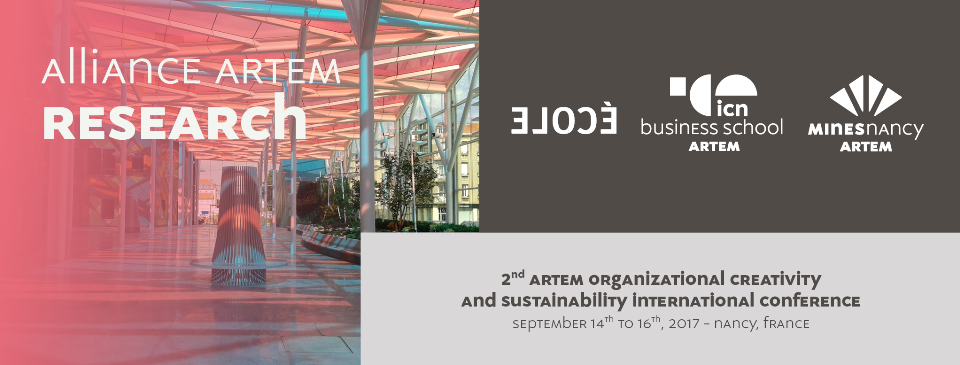sub-themes program > sub-theme 3
SUB-THEME 3: Connecting creativity and sustainability via human body: Re-creating creative and sustainable organizational bodies through body-based management learning
Convenors: Takaya Kawamura, Anne Pässilä, Sue Mofat
Room: 134
Friday, 15th September
|
08:30
|
08:55
|
Session 1
|
What drives the relationship between creativity and sustainable development? Proposition of a model
K. Mnisri, K.-P. Schultz, N. Guimaraes da Costa
|
|
08:55
|
09:20
|
Bridging conscious and unconscious knowledge in order to strengthen sustainability production in HMI contexts
M. G. Arnold
|
|
09:20
|
09:45
|
Cross-disciplinary perspective - creating resilient futures through interaction of arts and science
A. Pässilä, H. Kahiluoto, A. Owens, H. Mäkinen, A. Kahiluoto
|
|
09:45
|
10:45
|
Opening workshop
A. Pässilä, T. Kawamura
|
|
10:45
|
11:15
|
|
Break
|
|
11:15
|
11:40
|
Session 2
|
Responsible leadership inspires HEIs to become humanised, innovative and creative environments
A. Martins, I. Martins, T. Ahmed Akbar Vajeth, O. Pereira
|
|
11:40
|
12:05
|
Teaching business economics for sustainability with different interests coming into play
P. Andersson
|
|
12:05
|
12:30
|
Cultivating sustainable organizational bodies by embodied, playful learning in inter-practices
W. Küpers
|
Saturday, 16th September
|
08:30
|
08:55
|
Session 3
|
Drama in ESD – a multimodal experience
E. Österlind
|
|
08:55
|
09:20
|
Becoming connected in drama for a sustainable future
A. Lehtonen
|
|
09:20
|
09:45
|
Facilitating sustainable development through artful inquiries
S. Suomalainen, A. Pässilä, A. Owens, C. Holtham
|
|
09:45
|
10:15
|
|
Break
|
|
10:15
|
10:40
|
Session 4
|
Reflections on an (auto-)ethnography of ‘art-work’
T. Letiche, J.-L. Moriceau
|
|
10:40
|
11:05
|
A Theatre of Non-Capitalist Sustainability
I. Paes, J.-L. Moriceau, H. Letiche
|
|
11:05
|
11:30
|
The Bodily Animal
J.-L. Moriceau, H. Letiche
|
|
11:30
|
12:30
|
Concluding workshop
(Cultural Animation for community empowerment, creativity, sustainability, arts, body, work/labour, health/well-being, community, affect, libido/hormone, representation, symbolization, identification, ...)
S. Moffat, T. Kawamura
|

|



